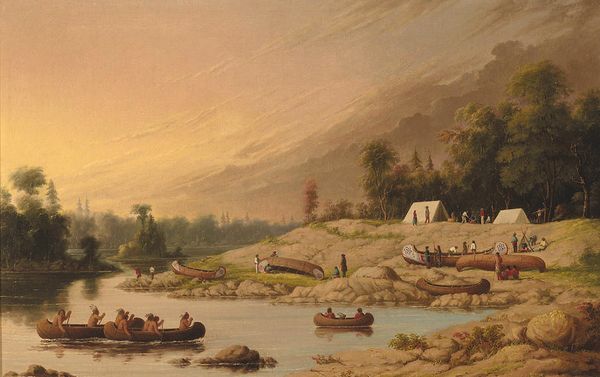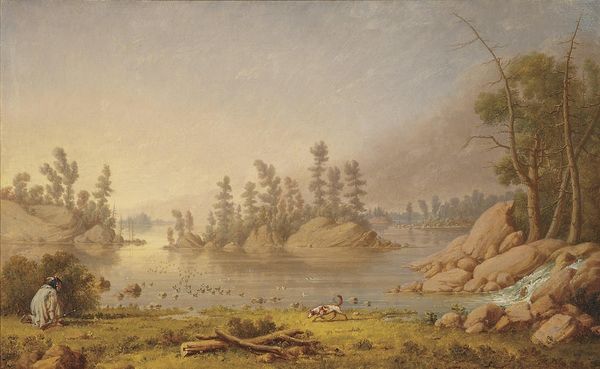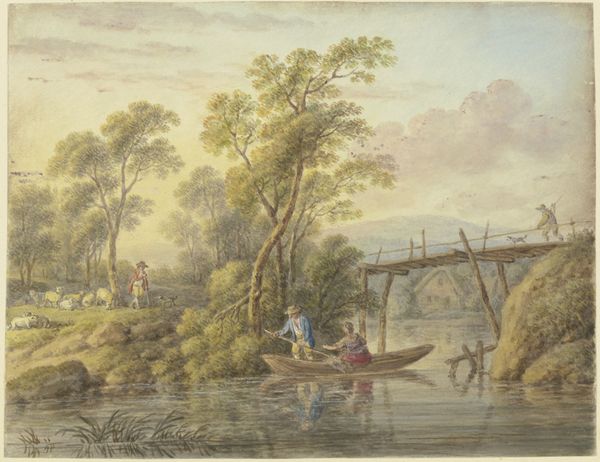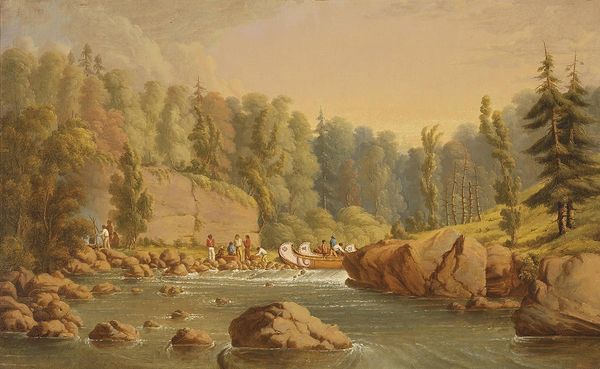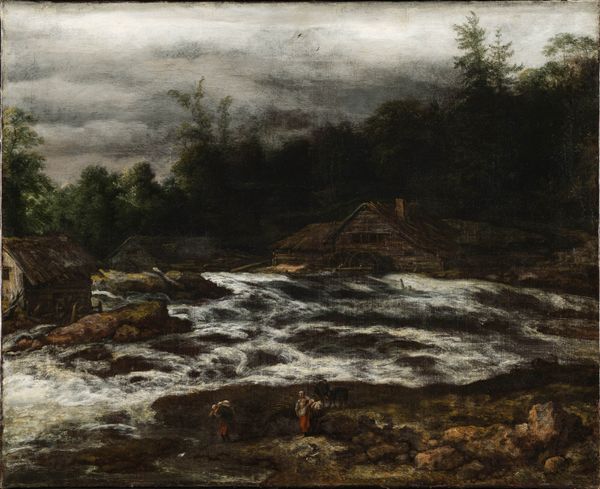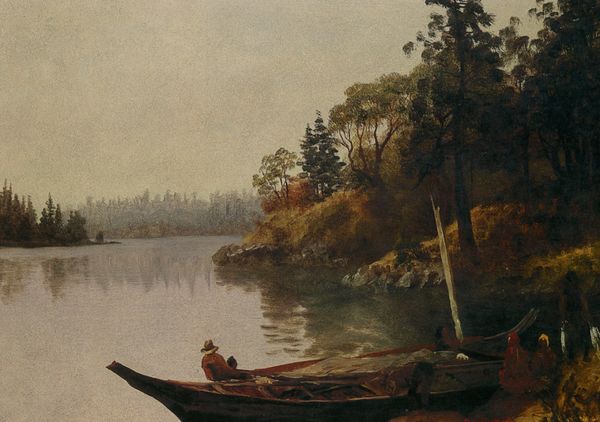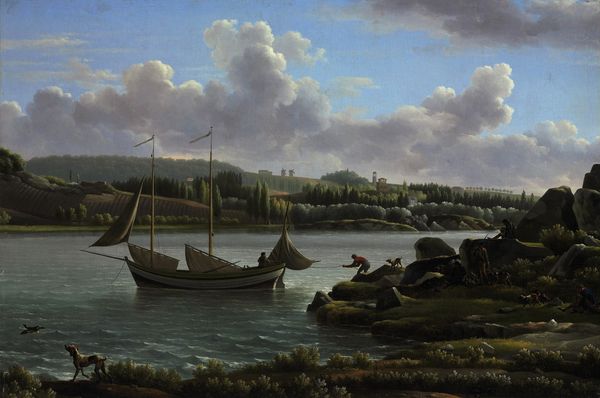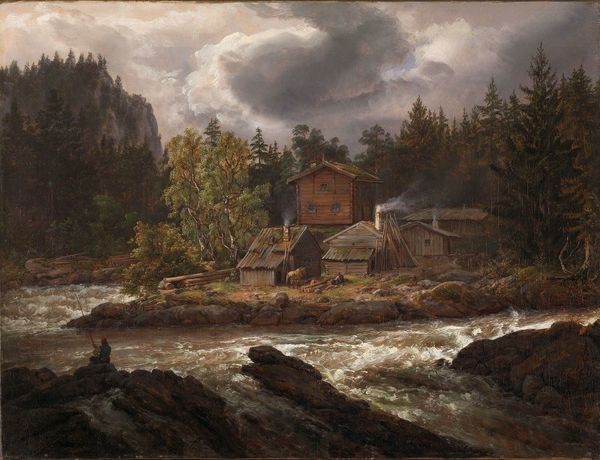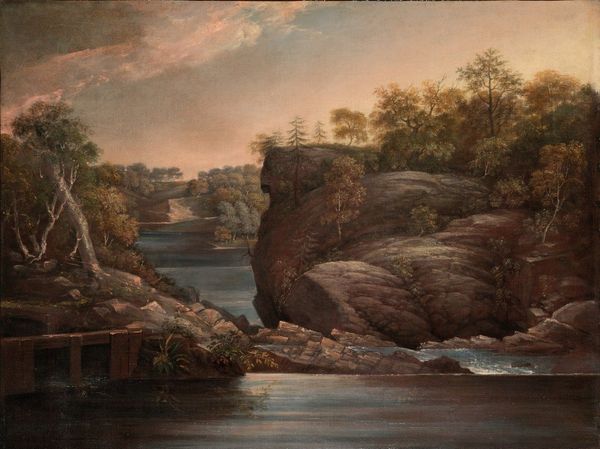
painting, oil-paint, oil-on-canvas
#
painting
#
oil-paint
#
landscape
#
hudson-river-school
#
oil-on-canvas
#
realism
Dimensions: 20 x 30 in. (50.8 x 76.2 cm) (canvas)22 1/4 x 32 x 2 1/8 in. (56.52 x 81.28 x 5.4 cm) (outer frame)
Copyright: Public Domain
Curator: Sobering is my initial reaction to this river scene—particularly the artist's use of diffused light and earth tones, which create a sense of quietude. Editor: We are looking at "Cheever's Mill on the St. Croix River," an oil-on-canvas painting created in 1847 by Henry Lewis. This work is a superb example of the Hudson River School's dedication to depicting the American landscape. Lewis places this mill within a specific environmental and economic framework. Consider the rapid industrialization occurring and how this portrayal connects to the socio-economic transformations of the time. The presence of figures in boats and on the shore highlights the interplay between nature and human activity, echoing themes of expansion and labor. Curator: The composition is striking, undeniably. The artist contrasts the wildness of the river's current with the ordered structure of the mill itself. The subtle color choices enhance the textures, from the rocky face of the cliff to the smooth wood of the buildings, which seems to root the buildings and give it grounding. The water seems a powerful element, and a possible threat. Editor: And within that powerful element, consider labor practices: what does it mean for some to thrive and others to barely survive based on geography, class and power? While some argue for an untarnished nature, others would emphasize the dispossession enacted on Indigenous land. What could a postcolonial perspective reveal, for example? What is left out? Curator: The semiotic readings could fill a book! The careful use of light draws my eye around the image: from the shadowed rocks to the sunlit buildings to the wispy clouds in the distance—effectively creating a harmonious yet intriguing viewing experience. Editor: I see it differently. It reflects the myth of American progress—at what cost does nature give way to man-made structures? Where is any mention of those whose ancestral lands this mill now occupies? The land holds a painful history of exploitation and displacement. Curator: Certainly the perspective changes the work itself. I have considered formal structure, while you advocate considering it through various filters, race, labor. Editor: We can’t separate our history from the present, and that always influences how we view and depict artwork. We see through different, equally valuable, lenses.
Comments
Join the conversation
Join millions of artists and users on Artera today and experience the ultimate creative platform.
